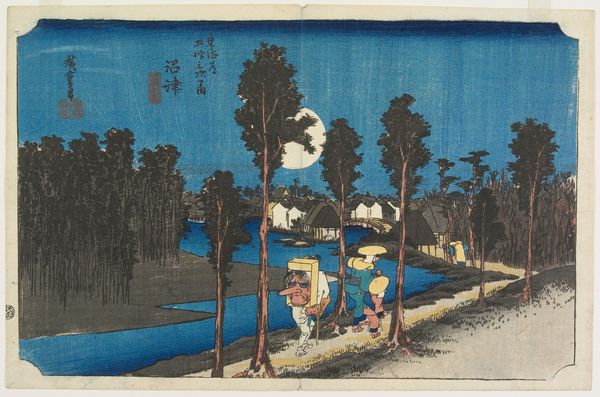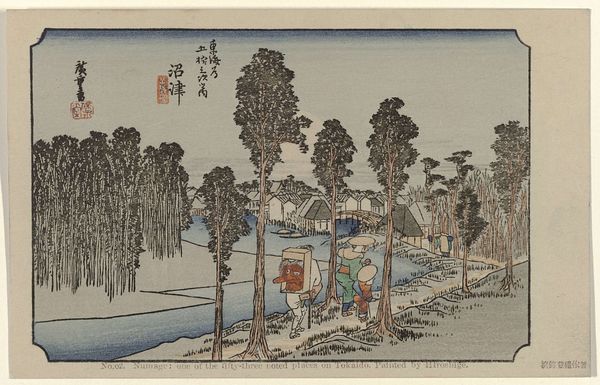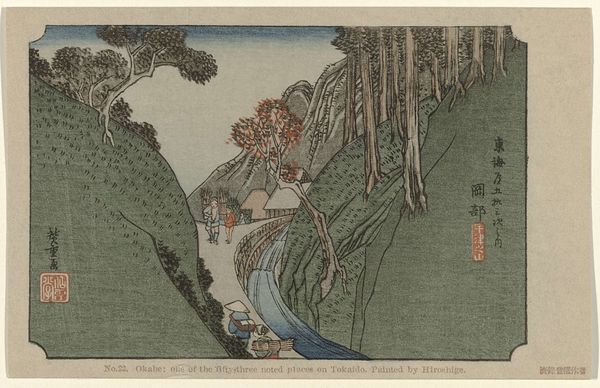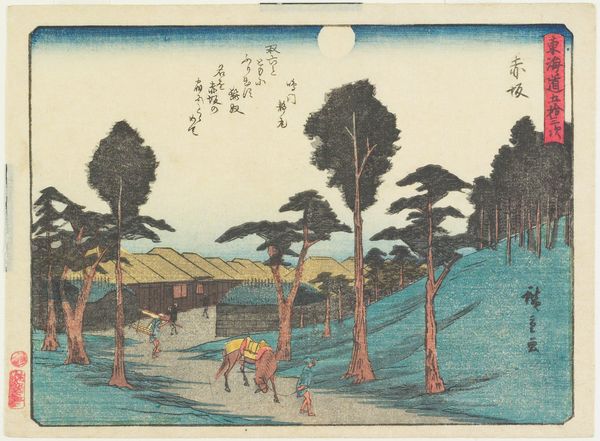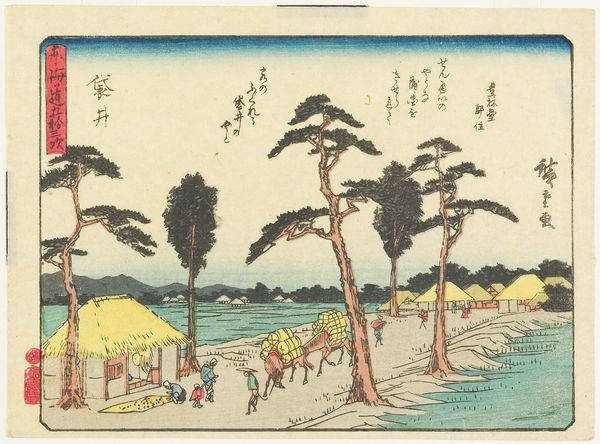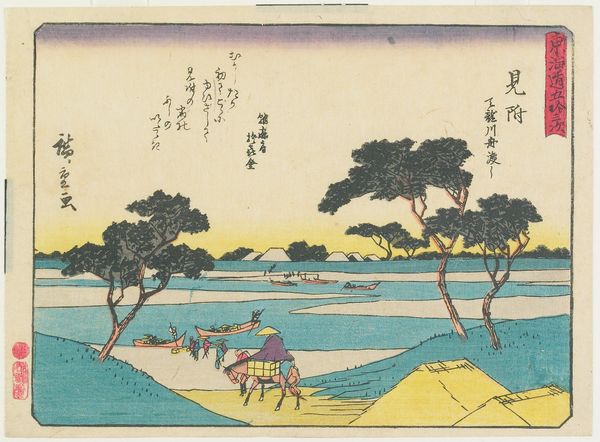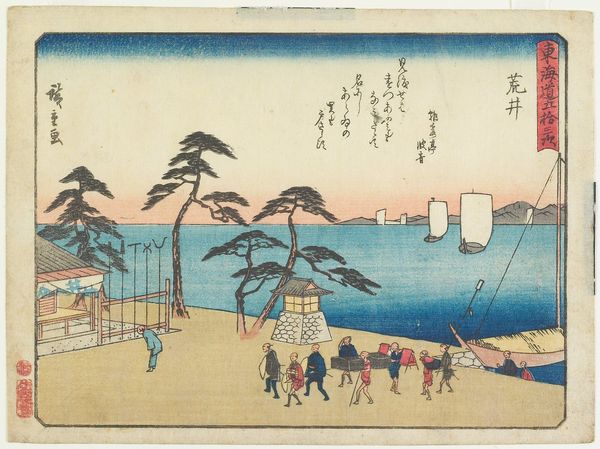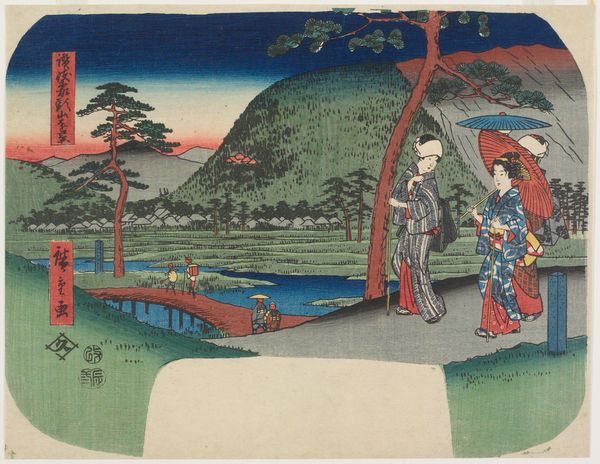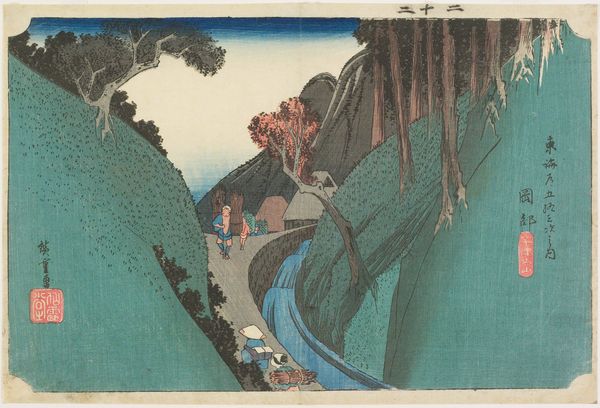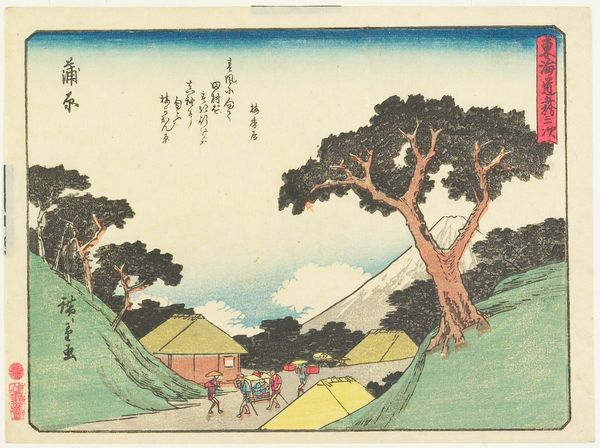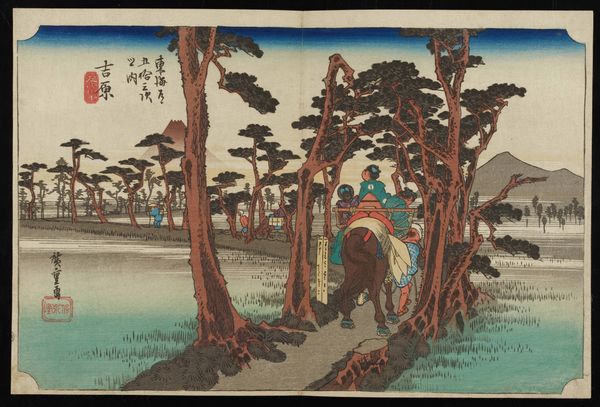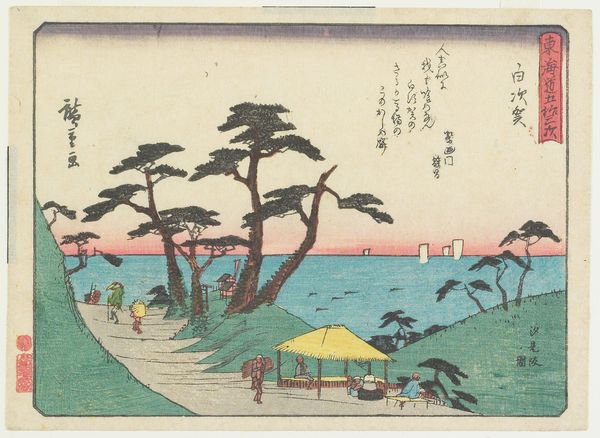
print, woodblock-print
# print
#
asian-art
#
landscape
#
river
#
ukiyo-e
#
woodblock-print
#
orientalism
#
cityscape
Dimensions: height 233 mm, width 366 mm
Copyright: Rijks Museum: Open Domain
Curator: This is "Numazu in de avondschemering," or "Numazu in the Evening Glow," a woodblock print by Utagawa Hiroshige, dating from around 1828 to 1835. It’s part of his series, "Fifty-three Stations of the Tōkaidō," and we have an impression of it here at the Rijksmuseum. Editor: My immediate feeling is one of tranquility, a calm imbued with soft moonlight. There's an almost dreamlike quality to the composition, even with its fairly grounded, everyday scene. Curator: Hiroshige was a master of ukiyo-e, the Japanese woodblock print tradition that focused on "pictures of the floating world," often depicting landscapes, beautiful women, and popular entertainment. His work had a profound influence on Western artists like Van Gogh. It certainly presents a curated vision of 19th-century Japan, crafted and marketed to appeal to travelers and a growing urban population eager for visual souvenirs. Editor: Indeed, and the moon itself carries layers of symbolism. In Japanese culture, the moon is often associated with purity, serenity, and the passage of time. Its presence here bathing the scene could suggest reflection and a kind of melancholic beauty as night falls over this coastal city. Curator: Precisely. We see the travellers on the road; these images served as guidebooks but also as romanticized images of Japanese life. This, however, brings up a crucial point. Who exactly was the audience for these prints? Were they seen as a straightforward representation of life in Japan or, in the face of ever-growing European trade, also expressions of Japanese cultural identity, of things seen to be of quintessential Japanese tradition, of "Japaneseness"? Editor: I think both aspects are true. The print captures not just a specific place but also evokes the emotional experience of being there, a kind of curated experience perhaps, highlighting what were seen as culturally relevant elements for that experience at the time, but not less meaningful for it. Even the deep indigo blue of the sky and water feels evocative, a colour carrying connotations of nightfall and mystery. It's a carefully constructed image meant to resonate on many levels. Curator: Looking at "Numazu in the Evening Glow," it is remarkable to consider how Hiroshige shaped our perception of Japan. It makes us consider what stories we want to tell. Editor: Ultimately, Hiroshige's rendering provides an opening into another culture, an invitation to contemplate.
Comments
No comments
Be the first to comment and join the conversation on the ultimate creative platform.
